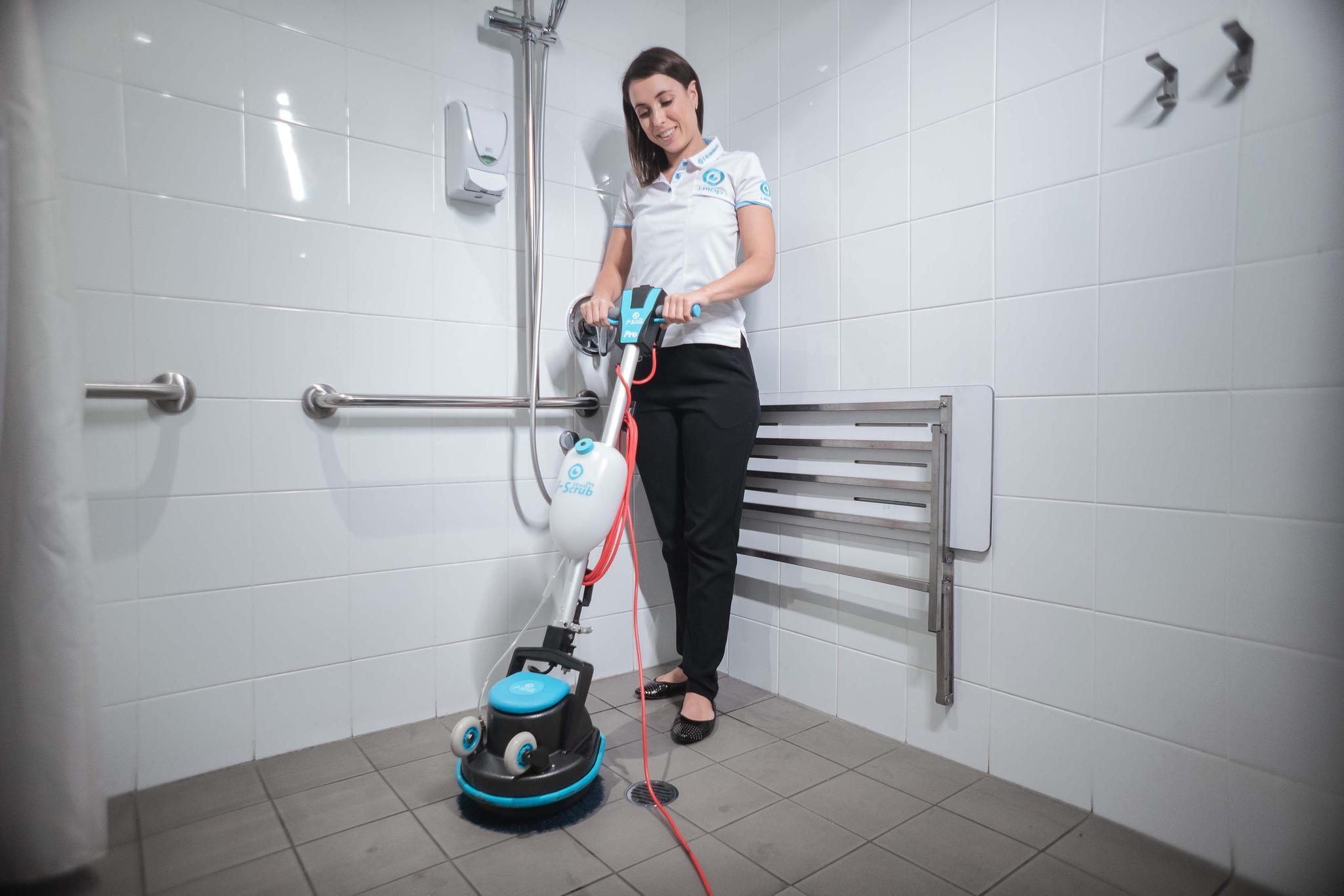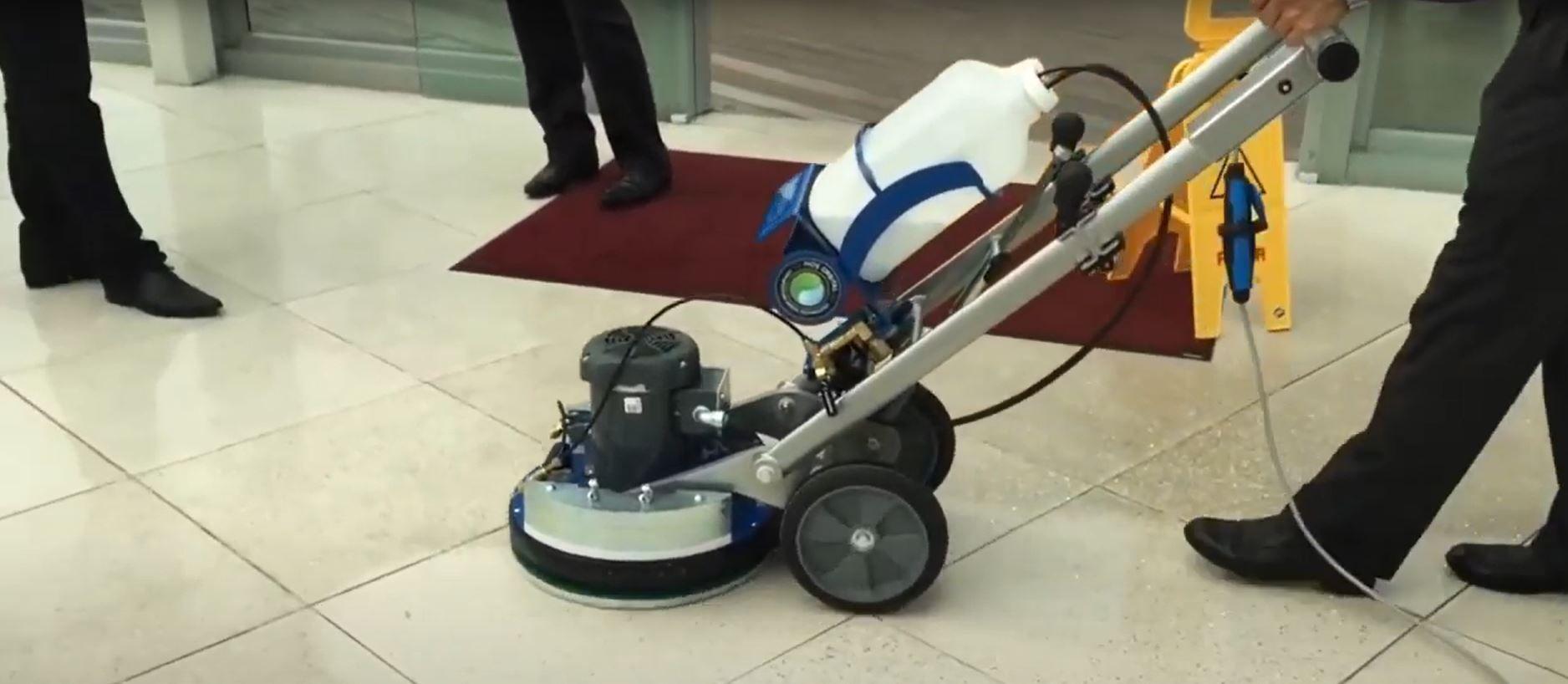You are reading: Rotary vs Orbital Floor Scrubbers: What's The Difference?
27 January 2022
2min read time
Brooke Payne
Rotary vs Orbital Floor Scrubbers: What's The Difference?
Share:

Rotary and orbital scrubbers are popular choices for floor cleaning in Australia, each with unique benefits. Rotary scrubbers excel in low-cost wet floor scrubbing, ideal for large spaces needing thorough cleaning. On the other hand, orbital scrubbers are better suited for dry buffing and scrubbing, offering greater flexibility for various applications. Selecting the right scrubber depends on your cleaning needs and budget.
In this video we'll discuss which is best: Rotary vs Orbital Floor Scrubber?
In this article, we are looking at floor cleaning machines built for commercial applications, not some of the smaller machines that are common in some retail shops for domestic applications.
Rotary scrubbers are often known as swing scrubbers. These machines had their origins back in the early 1900s, and other than enhancements to handle designs and some basic ergonomics, not a lot has changed about the way a swing scrubber works.
How do rotary floor scrubbers work?
Now the reason a rotary scrubber is often called a swing scrubber is because when you use them, the easiest way to move the machine is to swing it from side to side. This is done by simply lifting the handle up, which increases the pressure on the front of the brush and makes the machine pull to one side, or pushing the handle down, which increases the pressure on the back of the brush or pad and makes the machine pull to the other side.
Sounds easy, right?
Not always! If you’re a newbie, operating a swing scrubber can be like trying to ride an angry bull. This is the single biggest drawback of a swing scrubber – they can be super hard to control if you are not used to it. It might sound funny but we’ve heard of plenty of cases where a swing scrubber has put a dent in a wall, cracked a door, even smashed through a glass shopfront. Or worse still, people have been injured.
Now, it’s not all bad. For an experienced operator a swing floor scrubber is straightforward, but one tip: if you are starting off for the first time with a swing scrubber, start in a big open area so you have plenty of room if things go pear-shaped!
The brush or pad on a rotary scrubber generally spins at between 150 and 250 rpm depending on the particular machine. There are other machines called swing or rotary polishers which look exactly the same as a swing scrubber (often made by the same manufacturers) however if they are in the 300 – 500rpm range we would call them a swing polisher, which are used for buffing floors to increase gloss levels. Never use a rotary polisher for scrubbing or stripping floors, or for cleaning carpet as the higher speed makes them dangerous to work with on wet floors. In the 150 – 250rpm range, which is what we are talking about in this article, we call that a scrubber.

Some rotary scrubbers will have an onboard solution tank, which is brilliant if you are doing wet scrubbing of floors, floor stripping, or carpet encapsulation cleaning. A tank allows you to either apply the solution with the machine, or what is more common is to still apply your solution or floor stripper with a mop bucket, watering can or pump-up sprayer (depending on what you are doing) . Then, if you have some of the same solution diluted in the tank on your scrubber you can use that to apply more solution in particular areas such as in a dirty doorway, or if a bit of the floor is starting to dry out. (Which, by the way, you don’t really want to happen when you are doing deep cleaning!) So if you can get a scrubber with a tank, if gives you more flexibility and efficiency in your cleaning process.
In terms of the sizes of rotary scrubbers on the market, there are some mini scrubbers in the 33-35cm range, however most brands will use a 40 or 43cm brush or pad, or if you like your sizes in imperial, 16 or 17 inch.
How do orbital floor scrubbers work?
So, now, let’s look at orbital scrubbers.
The difference with an orbital floor scrubber is that rather than just rotating like a rotary scrubber, the head oscillates (check the above video to see this in action). This means the bristles of the brush or pad fibres are moving in a lot more directions at once. An orbital scrubber will give 6-10 times the number of cleaning passes per minute on the same area of floor. This means an orbital scrubber will give you a faster result, and a lighter weight orbital scrubber can give faster and better cleaning results than a much heavier swing scrubber.
The other thing with orbital scrubbers is they do not have any of the torque or side swing that a rotary scrubber has, so they are a safer to handle and easier to control. For example, you could use a small orbital scrubber to scrub a stair tread quite safely, something you would never think about doing with a swing polisher.

An orbital scrubbers higher cleaning passes per minute also gives higher friction and heat generation if you are using it on a dry floor, so you can use an orbital scrubber for dry buffing floors to increase gloss levels, as well as scrubbing/deep cleaning.
In terms of sizes of orbital scrubber. We at i-team only do one size, that’s the i-scrub 30E which as the name suggests has a 30 cm brush, or can be used with a pad drive and 30cm microfibre or nylon scrubbing pads as well. There are also other brands of orbital scrubbers which are in the 40 – 43cm size range, or 16 to 17inch in imperial. Probably one of the most popular brands we see and hear positive feedback on is Orbot machines, so it would be worth checking these out if you do need a larger machine than our i-scrub 30.
Read more on the top 10 questions answered about the i-scrub 30.
So, which is better?
Which machine is right for you?
If you are looking for a low-cost, reliable machine that is dedicated to mid-larger sized floor stripping or scrubbing jobs, and you have experienced operators, it’s hard to go past a swing scrubber. They are generally reliable, they’re simple, once you know what you’re doing they aren’t too difficult to control, and they’re relatively low cost.
If you’ve got a wide range of applications such as floor stripping and scrubbing but also you want the flexibility to be able to do bit of buffing, you might have some stairs you want to clean, and you have a wide range of both small and larger jobs (and different sites to transport it to), you will find that an orbital machine like the i-scrub 30 gives you much more flexibility, is much easier and safer for anyone to use, is more easily transported, and is very good value.
And then If you want that versatility of an orbital scrubber but most of your jobs are medium-large, you might need to look at a larger unit like the Orbot.
Get in touch here to book a demo of any of our cleaning suite.
Common Questions Answered
1. What are the key advantages of rotary floor scrubbers compared to orbital floor scrubbers?
Answer: Rotary floor scrubbers are known for their powerful scrubbing action due to their rotating brushes. They are effective at removing heavy soil and stains, making them suitable for deep cleaning tasks. They work well on a variety of floor surfaces and can be particularly effective in commercial settings with high foot traffic. However, they may require more maintenance and have a higher noise level compared to orbital scrubbers.
2. In what situations or environments would an orbital floor scrubber be more beneficial than a rotary floor scrubber?
Answer: Orbital floor scrubbers are beneficial for environments where a more gentle cleaning approach is needed, such as on delicate or easily scratched surfaces. Their non-rotating, back-and-forth motion reduces the risk of damaging the floor and is effective for maintaining floors with a high-gloss finish. They are also quieter and often easier to maneuver, making them suitable for settings like offices or schools where noise and ease of use are concerns.
3. How do maintenance and operational costs compare between rotary and orbital floor scrubbers?
Answer: Rotary floor scrubbers typically have higher maintenance costs due to their complex moving parts and brushes that wear out over time. They may also use more cleaning solution and water. In contrast, orbital floor scrubbers usually have lower maintenance costs due to fewer moving parts and a more straightforward design. They are also more water-efficient and often have lower operational costs, making them a more economical choice in the long term.
References
CleanLink – Rotary vs. Orbital Floor Scrubbers
URL: https://www.cleanlink.com/news/article/Rotary-Versus-Orbital-Floor-Scrubbers--22238
Facility Cleaning Decisions – Understanding Floor Scrubber Types
URL: https://www.facilitycleaningdecisions.com/article/floor-scrubber-types-comparison
The Janitorial Store – Rotary and Orbital Floor Scrubbers: Pros and Cons
URL: https://www.thejanitorialstore.com/articles/rotary-orbital-floor-scrubbers